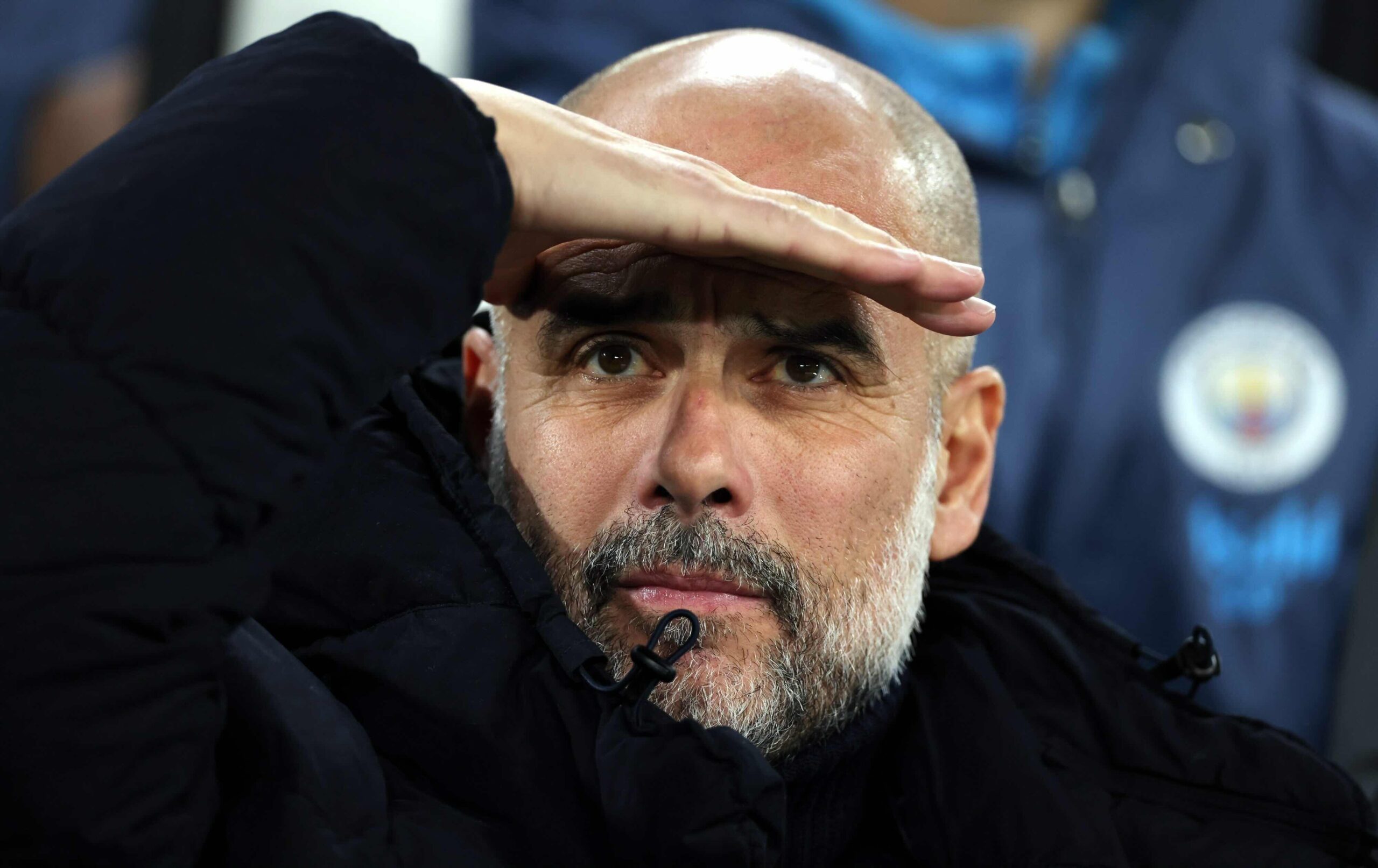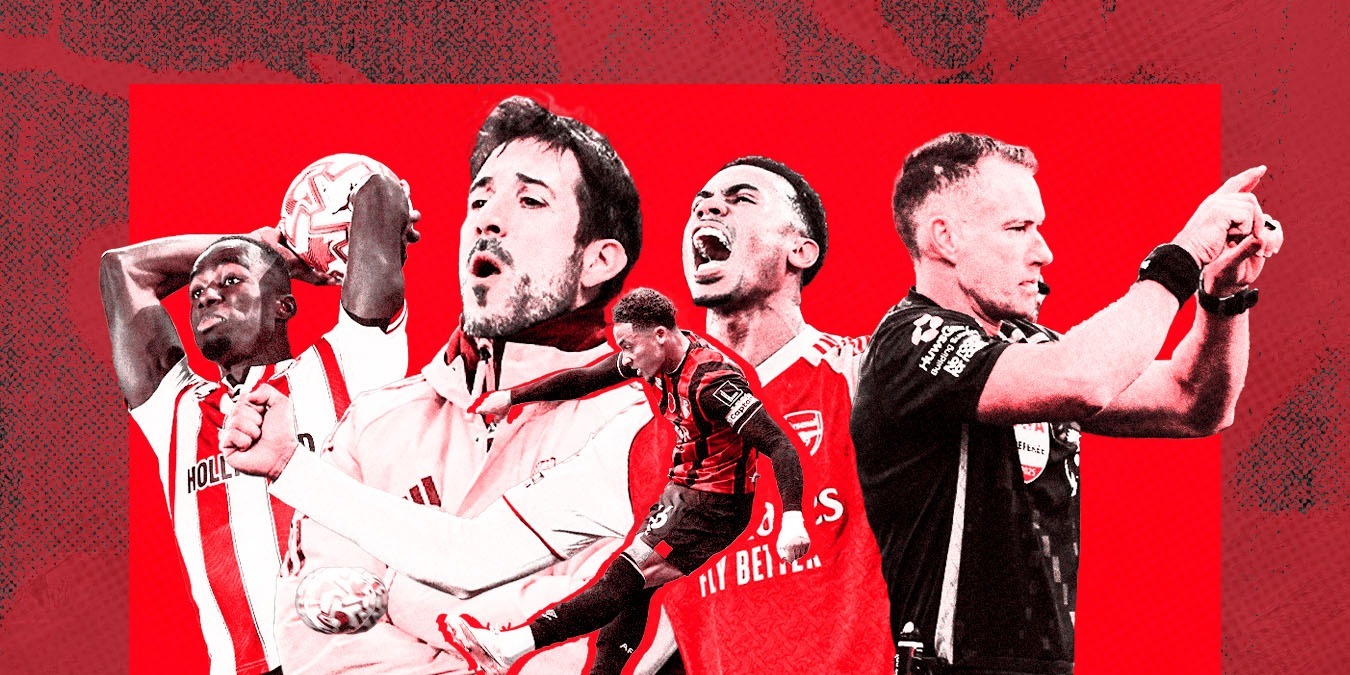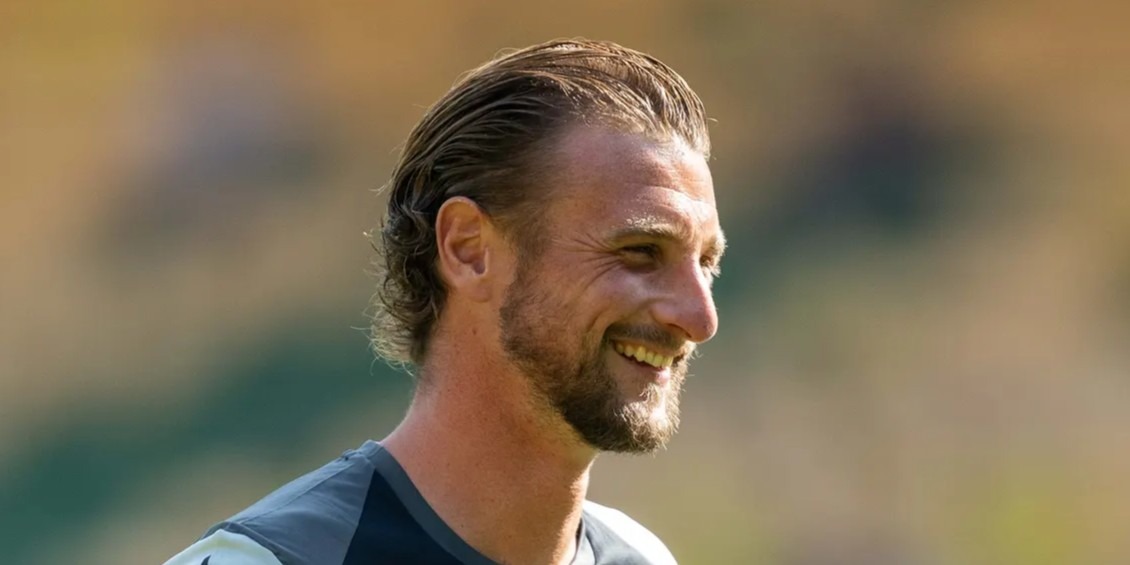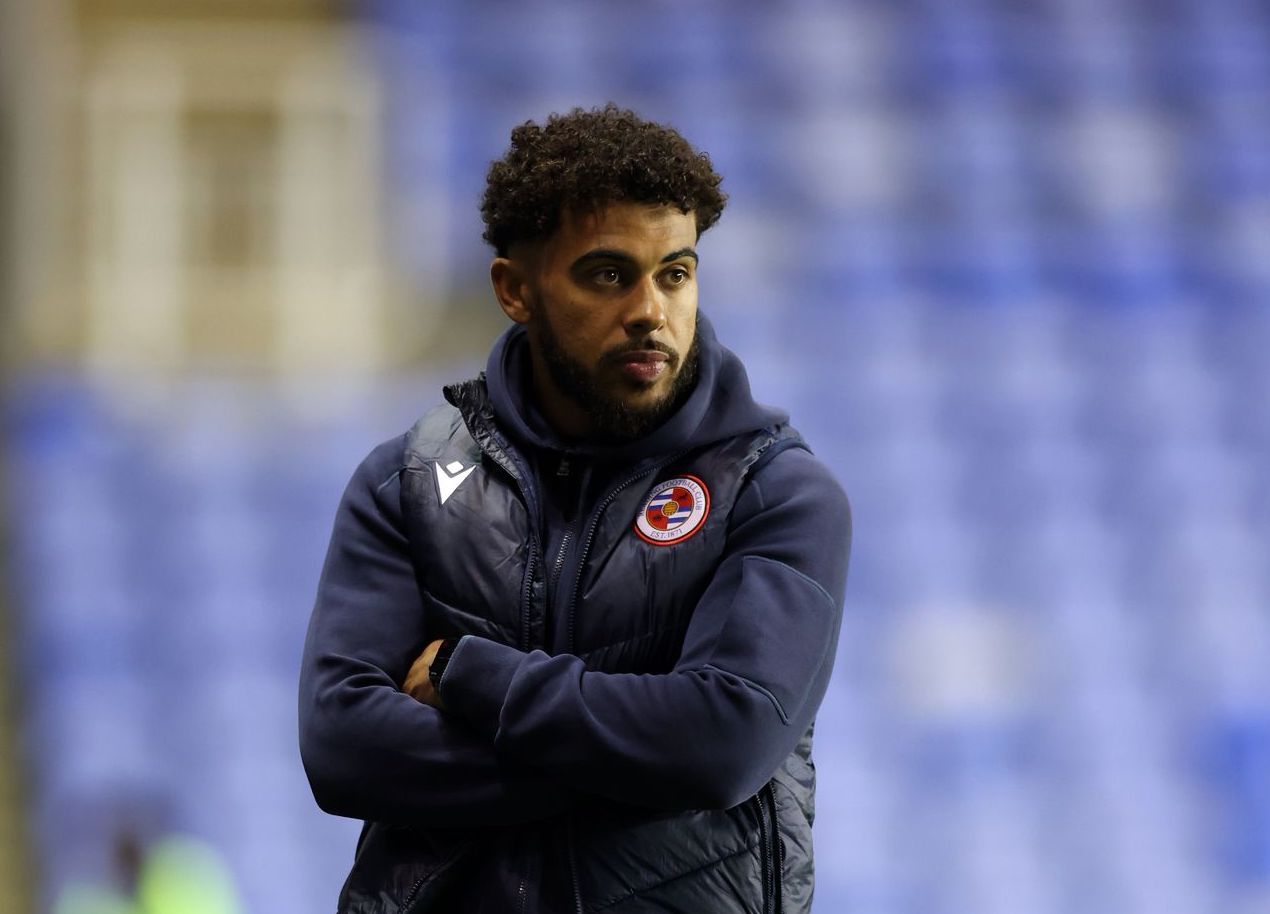
Set Pieces, long balls and target men: The journey from positionism
Written by
Training Ground Guru
November 4, 2025
Pep Guardiola’s Manchester City once epitomised positionism, with 65–68% possession per game, intricate short passing and total control.
In the 2025/26 Premier League season, amidst a general shift towards more direct play and a focus on set pieces, Guardiola has continued to evolve into a different type of manager.
Speaking on the TGG Podcast (which you can listen to below), A Licence Coach and analyst Jamie Hamilton charted this tactical journey – for both Guardiola and the Premier League as a whole.
Guardiola’s positionism
Jamie Hamilton: Guardiola’s Barcelona – 2008 through to 2011, that final against Manchester United at Wembley – were arguably the greatest club side of all time. Some of the play of that team was other-worldly.
That had a huge impact on me and I became very interested in the ideas surrounding it. At the heart of Guardiola’s philosophy is ball possession: controlling the ball and controlling the play.
I tried to coach my own versions of positional play, to some degree of success. I was always interested in having teams control the ball and be calm with the ball. I always liked that approach and it seemed that the way to do that was to follow some, if not all, of these rules: about where players have to be in certain moments, how the pitch should be occupied, some of the patterns of play that develop from that and some of the concepts that are involved.
In Guardiola’s case, the school of positional play, ‘juego de posicion’, the Spanish name, has its roots going back through Holland and even further if you want to trace it.
The general concept is that players occupy certain sectors of the field. In Guardiola’s own words, the players don’t move, the ball moves to the players. That’s of course an exaggeration, but it’s very telling that Guardiola himself would phrase it in such a way.
We can see that very clearly in the possession structures that have become so ubiquitous within possession football. That positioning, that rational occupation of space, allows combinations and relationships to develop within that structure.
This positional game emerged somewhat in response to positional defending – we would call that zonal defending – so the (Arrigo) Sacchi revolution of the late 80s, early 90s, filtering through the global game.
Within this, the defence is organised in zonal structures, which means you leave space between the lines. Positional play is very concerned with positioning its attacking players between those lines, in pockets, becoming free men, and using the team as almost a network of pinning players to stretch out the opponent and open the spaces between those lines.
You put players in there and find these free men with passes through the lines. Guardiola and coaches that follow this school of thought are quite explicit in talking about chaos being a negative thing. This is a very important distinction to understand from this more positional mindset: that chaos, uncertainty, radical volatility, are inherently negative.
We want to try and have less of that and more of the order that we are familiar with. That can then help the players know where they are, to orient themselves and to execute certain actions very quickly and efficiently.
How positionism became the ‘homogeneous’ style
Juanma Lillo, Guardiola’s former assistant, made the famous quote about the homogenisation of football. He called it dos taquismo – two touchism.
Receive, pass. Receive, pass. Receive, pass.
Over the last decade or so, since Guardiola’s rise, positionism (my shorthand) has become the dominant paradigm in global football. There are different interpretations, but I think as we’ve gone on, we’ve seen a real homogenisation among not only top-level coaches, but also youth coaches – the ideas of occupying half spaces and inverting full-backs and all these kinds of things.
For sure, defenders, midfielders, are much better across the board at keeping possession. But this is also enabled by the fact that they know where their team-mates are going to be.
They’re like, ‘Okay, if I receive here, he’s going to be outside. I’m going to open my body, play, and become expert in the technical execution of that action.’
The raising of that floor has also had a counteract though, where it’s dropped the ceiling of the more maverick, intuitive, spontaneous, technical actions which I would like to see more of. Have we seen an increase in wingers making one-two combinations to go inside defenders, or an increase in maverick central dribblers? Possibly not.
Mousa Dembele was one of my favourite players, because he would pick the ball up in the centre of the pitch and dribble past people. You see a little bit of that now with players like Frenkie De Jong, but not very often.
Positionism has become the dominant paradigm. And when a concept or ideology becomes widespread and dominant, it’s difficult to see alternatives.
Not that this is Guardiola’s fault in any way. He’s essentially a football genius who is arguably the most influential – and one of the most successful – coaches of all time.
A different style: relationism
As I was coaching this positional style, I felt conflicted. I found myself having to be very restrictive with the players and saying, ‘No, don’t go there, you have to be there.’ I reconciled that within myself by accepting that if I wanted the team to play possession, controlling football, I had to do this, because I wasn’t aware of any other possibility.
In the last five, six years, I think there was also a real shift (in Guardiola’s teams). With the Barcelona team, there was player-led spontaneous magic of generational talents in Lionel Messi, Andres Iniesta and Xavi.
I think Manchester City’s Treble-winning team was pretty conservative. There were lot of defenders on that team, very structured play, Erling Haaland and the ability to go more direct. As we’ve gone on, this tendency towards control and certainty and order seems to have intensified.

Brazilian coach Fernando Diniz
I find today in the Premier League, although the players are fantastic, unbelievable, and there are talented coaches, that much of the play is somewhat formulaic and less inspiring than could be possible with these players.
It wasn’t until I saw the football of the Brazilian coach Fernando Diniz and his Fluminense team, around the summer of 2022, that I realised you could achieve high-possession stats, lots of passes, lots of control of the ball, in a very, very different way. That was the light bulb moment for me.
Fluminense eventually got to the World Club Cup Final, where they were comfortably beaten by Guardiola’s Manchester City (although the disparity between those teams in terms of resources was crazy). You can enjoy some very, very fun passages of play from Fluminense as they outplay the Manchester City press if you watch that game.
Jozsef Bozsik, one of the biggest influences on my work, a Brazilian tactical theorist, refers to this style as Jogo Funcional – the functional game as opposed to the positional game.
Guardiola has described the positional attack as a zonal attack – players assigned to sectors of the pitch and you organise structurally – with a lot of the influence coming from handball.
A non-zonal attack, for me, is what I saw when I watched Fluminense or Argentina or Ancelotti’s Real Madrid or Alex Ferguson’s Manchester United or Arsene Wenger’s Arsenal.
Pre-designed systems
This also taps into a very interesting – and I think relevant – topic at the moment: coaches having pre-designed formations or systems. They arrive at a team and their first thought is, ‘Which player is going in which slot?’ But what if you don’t have players who are particularly suited to this arrangement and the roles required ?
Of course, if you’re Guardiola, you buy the ones that can. That’s top-level football. Do I think that’s a really good way for people to think about football coaching? Not necessarily, because it really casts players as commodities that are traded and sold until you get the right ones that fit the slot of your system.
Is that the way that you should think about football as a coach? Not necessarily. More appealing to me – and I think a central tenet of relational football – is for the coach to arrive in whichever context they are and evaluate: ‘Who do I have? Who are these people? Who are these players? What are their qualities?’ How can I, as a coach, help grow or develop a system?’
It’s still a system, but a system that allows players to show the best of themselves. If you have two strikers who play really well together, why wouldn’t you play a system with two strikers?
Recently, Gary Curneen was in Brazil. He was talking to one of the development co-ordinators at Fluminense. There were anecdotes coming from that Academy that ‘we don’t have a 4-3-3 all the way through the Academy. We don’t have some kind of standardised game-model curriculum that everyone must follow.’
‘What we do is look at the players and we can play completely different formations and different systems in each age group. That is a result of the players and how they fit together.’
It’s almost like you’re making furniture for mass consumption and have to make a table for Ikea and have a blueprint of what that table is. You’re just going to follow that design and whatever materials it is you’re using and make that same thing every single time.
Whereas a more, let’s say artisanal or creative approach would be to look at the materials you have and say, ‘What kind of table could this be? What can maximise the qualities of this material?’
How teams combatted positionism
The key to success (of positionism) is the efficiency, speed and quality with which the actions can be executed.
But it can still be quite predictable. When you play against Enzo Maresca’s Chelsea, for example, you know pretty much what formation they’re going to use and what they’re going to do. It’s still very hard to stop, because the players are very good at doing these things, but now defences are getting more attuned at how to defend it man-to-man.
Maresca was asked in a recent interview with Sky Sports about the tension between positional play and the freedom of players. To paraphrase, he said, ‘There is no tension. I give the players freedom through positioning them in pockets of space between lines.’
For Maresca, in the positional paradigm, the concept of freedom is a player receiving the ball without pressure and with time: by the right winger pinning the opposite full-back, by other pinnings happening, other positional dynamics, Cole Palmer is afforded a pocket of space that he then moves into.
Between four different players who are all pinned, he is free to can go and express himself. This is a very different concept of freedom from a coach like Carlo Ancelotti, who, when asked how he’s going to arrange his forward line, says, ‘Sometimes Rodrigo’s on the right, but then I see him on the left and I think, well, what’s he doing over there?’
What happens if their defensive structures don't have lines? What happens if you don't defend in a structure but rather man to man?
Jamie Hamilton
Rodrigo or Vinicius Junior or whoever are allowed to move anywhere, usually towards the ball, because they’re footballers and want to play with the ball. What you end up is with these overload situations and one-twos and flicks and close combination tricks, which I like a lot.
Guardiola and Arne Slot have talked about this rise of man-to-man marking. Defences are not so zonal any more, they don’t give you these spaces between the lines all the time.
Physical levels are also going higher and higher, so this way of playing is running into a bit of a problem, because its inherent predictability is being countered. So where does it go? It can’t go faster than the human limit of being fast, because these are human beings.
It’s not like a factory, where if you’re not fast enough or good enough you can be replaced with machines. In a football team, there’s a human biological limit to how fast and how efficient you can be. Once you hit that limit, which I would say we’re approaching, where do you go?
What happens if their defensive structures don’t have lines? What happens if you don’t defend in a structure but rather man to man? Then you can’t put a free man between the lines.
Then, Maresca’s freedom is then a lot harder to find. Because a player will not allow himself to be pinned – he’ll just follow Cole Palmer and stand next to him.
Newcastle United are a team that seem to defend very zonally and leave huge gaps between them, so it’s not like this is completely homogenous across the Premier League, but more and more teams, Bournemouth for example, are implementing these radical man-to-man pressing systems.
How then do you get a player facing forward with a good situation?
Ali Tweedale focused on set pieces in an excellent article for Opta Analyst last week. So far, this Premier League season has seen:
-
2nd highest proportion of goals from set pieces (30%) in EPL history (after 2009/10).
-
Highest proportion of goals from corners (19%).
-
Average of 4 long throws (20m or more) into penalty area per game – more than double any other season.
-
Ball in play for average 54.8% per match – lowest on record
-
Average of 45 mins 31 s waiting for ball to come back into play.
-
Average length of stoppage of 28.8 secs – longest on record.
-
Average of 11 mins 21 s waiting for throw-ins – compared to 8 mins 50 s last season.
Rise of set pieces and direct play
Then we get to what we’re seeing now: a lot of long throws and set piece dominance. There are caveats – it’s a small sample size at the start of this Premier League season – but I think the trends have been there a little while longer than that.
‘If we’re going to struggle to get free players on the ball in good attacking situations, then what about attacking situations which we can plan and choreograph during the week?’
Bernardo Cueva, of course, is one of the top guys. When you speak to Bernardo, which I’ve been fortunate enough to do, there’s a lot going on with even throw-ins that are very interesting and might not be what people think.
So I don’t want to criticise set-piece or throw-in coaches, but what I do think is interesting is that we are going this way. And the reasons why. It’s for control. You have time, if the game is frozen, to set up your rest defence. You can make your play and choreograph it. It’s almost like the NFL
And if teams want to go man v man on the top line in defence, get a striker, like Erling Haaland or Viktor Gyokeres or Benjamin Sesko or Liam Delap, and kick it long into the space. That’s the reason we’re seeing these kinds of classic number nines coming back.
‘Let’s just boot the ball down the pitch.’ Okay, that’s a little bit crass, but essentially it’s what we are seeing. Stretch them out and hit the big man. He’ll run onto it or lay it off to guys arriving in that space to make the second ball.
You open that space between the defence and the midfield line and hit the striker on the halfway line.
The hope for a more creative future
That’s the Premier League – there’s a bit of a lack of ideas there. I don’t think it’s a coincidence that we are seeing solutions come from other leagues. To find the most innovative films, you’re not going to watch Hollywood blockbusters, right?
Perhaps the best teams of the future could be the ones where the players are thinking on their feet, reacting in the moment, adapting during the game.
Harry Kane at Bayern Munich is a very interesting example of saying, ‘Okay, if you’re going to man mark us, will your centre back follow me back to his own box?’ Against Borussia Dortmund, we saw Kane Cruyff-turning on the edge of his own box to beat a player. Here was a very creative attacking player showing great skills in a 1 v 1 situation.
If you’re going to follow us, man to man, will you follow eight players? If you do, your defence is going to look very interesting. If you don’t, we’re going to outplay you with a combination.
It’s almost like coaches are saying, ‘Well, can we do that?’ Yeah, you can. You can do anything within the rules of football. There’s nothing in the rules about positions of players except the goalkeeper, right? That’s the only positional constraint in the game of football and that’s what makes it so interesting.
Someone who’s been on your podcast, Rene Maric, gave the line of that tactics don’t exist.
Well, Maric is now Assistant to Vincent Kompany at Bayern Munich. So what does Maric mean by that? Maybe he is talking about players being able to intuit immediate emergent game information.
If some of that information tells you that you’re being man marked as a striker and have very good ball skills, maybe you can say, ‘Okay, are you going to follow me? Let’s start moving around.’
I go back to Fluminense in 2022. Ganso is one of my favourite players, a really creative Brazilian, a classic number 10 playmaker. When Fluminense were up against the high pressing of Jorge Sampaoli’s Flamengo, for example, Ganso would drop right back and stand next to the goalkeeper on the six yard line.
The goalkeeper would roll it out with his studs and Ganso would start walking out with the ball. People say, ‘What’s your build-up structure?’ Well, that guy IS the build-up structure, because he’s really good.
From these kinds of principles, interesting patterns and combinations and relationships can happen and players can develop a different understanding of the potentials of going through opponents, outplaying opponents, rather than trying to find positional solutions to problems that are much less positional.
Let’s try to find these relational aspects – relation with the environment, relation between players – to tie some of these things together and enable the capacities of players like Kane.
And I’m very interested with guys like Eberechi Eze at Arsenal and Rayan Cherki at Manchester City, because I think there is a realisation that some of these more static and pre-planned positional games are becoming negated by very aggressive man-to-man pressing systems.
So is this maverick role going to creep back in? Are we going to see guys like Cherki and Eze afforded more autonomy to make spontaneous, creative actions? I hope so.
Follow Us
For latest updates, follow us on X at @ground_guru





